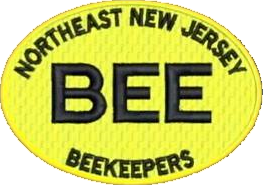Bees overwinter best when they are held at a temperature that keeps the cluster quiet and eating very little honey. That’s why sometimes we say we are putting the bees to bed for the winter. Though bees do not hibernate like bears, they cluster, produce heat, eat and wait for warmer days. There is an ideal temperature between 30-40 degrees F that keeps the bees quiet and eating the least amount of food. The warmer the weather the more the bees eat. AND oddly enough, the colder the weather (below 30 degrees F) the more the bees eat to generate heat. Does an unseasonably warm winter mean trouble for bees? Yes.
Don’t panic just yet. If a colony is healthy, meaning they are not suffering from viruses, mite overload or high nosema spores, they always stand a better chance of making it through the winter. But remember this: They need numbers! A colony must be heavily populated to provide the needed heat during extreme cold snaps. A large colony can generate more heat with less consumption of honey. In a smaller colony each bee will have to work harder to generate enough heat, which requires the consumption of more food.
It is not unusual for smaller colonies to die in the winter even though they had plenty of honey. It is because they could not maintain a survivable temperature in the cluster. In this case, the winter did not kill the colony, but rather poor summer and fall management. The colony was just too small to overwinter.
In the winter, the colony’s cluster shrinks in size as temperatures fall. The colder the temperature, the tighter and smaller the cluster becomes. This can be another explanation as to why bees die in close proximity to frames full of honey. Let me explain. On day one, the outside temperature can be 30 degrees F resulting in the cluster compressing into a loose cluster. They will begin to consume honey in combs near them. The next day, the high temperature may drop to 10 degrees F resulting in the bees compressing into a very tight cluster, shrinking in size even more. If the bees are held in this tight cluster for several days, they can quickly consume all honey nearby. To complicate matters, winter can throw another punch and the temperature can continue to sink resulting in the bees being unable to break cluster to go to areas nearby containing honey. As the cluster tightens and shrinks the comb around them has been drained of honey. As a result, the bees can starve out with nearby honey in combs they cannot reach due to the cold temperatures.
Winter survival depends on these factors:
1) Low level of mites
2) Low level of diseases and viruses
3) Amount of bees that can generate heat
4) Volume of stored honey and pollen
TIPS FOR WINTER FEEDING
1) Lift the rear of the hive to check the weight. If the hive is very light the colony is lacking stored honey and needs fed.
2) Do not remove frames unless the temperature is 60 degrees F or higher.
3) Do not feed liquid sugar during the winter. It will freeze. Also the bees will be unable to fly out and defecate due to being tightly clustered.
4) Bees die in February and March when the weather begins to warm up a little, but there is still no available nectar or pollen. This is more common in northern states such as Illinois. The queen starts laying more and the added brood requires much more consumption of resources that cannot be replaced. Late winter is the time to start feeding a liquid sugar mixture, one part sugar to one part water. It is only advisable to feed sugar water when you know the bees will be able to fly out of the hive once or twice a week. Pollen substitute is always a valuable resource to keep in the hive. Bees with a variety of pollen are always healthier. Yes, bees need pollen even during the winter. Pollen is the bee’s protein. In late winter, here in Illinois, bees are starved for protein and will begin eating almost anything that resembles pollen such as dog and cat food, dust from tiny bird seeds, and even our sawdust piles. Every spring I spread out dry pollen powder and the bees go crazy hauling it back to the hive.

Northeast New Jersey Beekeepers Association
A division of New Jersey Beekeepers Association